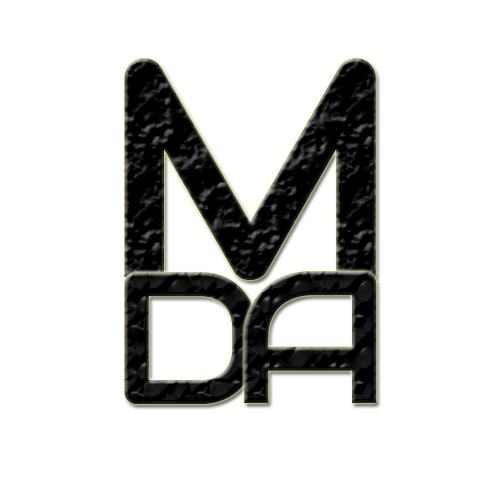Marco De Angelis is an Italian songwriter, musician, sound engineer and record producer. He started his musical journey at the age of 10, when he first put his hands on a musical instrument. Since then, he has acquired a broad experience in the field of musical instruments, ranging from acoustic/ethno instruments to electronic ones of the latest generation. He is one of very few Italian Chapman Stick players. He plays the guitar, bass and keyboards and enjoys a wide range of musical styles – although his main roots lie in the UK’s late 60s and 70s progressive-rock scene. He has created soundtracks for third parties and pursued his own original projects.
He is the arranger and artistic producer of a number of Indie albums released in Italy, UK and Latin America and has worked as a freelance Sound Engineer/Producer for some of the most important production companies in Italy. He is highly experienced in different media and venues (Recording Studios, TV, Theatre, Live concerts), has run his own professional recording studio in Rome for more than two decades and had his own music label between 1995 and 2005. In 2013 he released his first solo work under his own name; this was followed by his second album in 2017.
"But all these pieces are simply part of my “musical life” puzzle, and I won’t disown any of them"
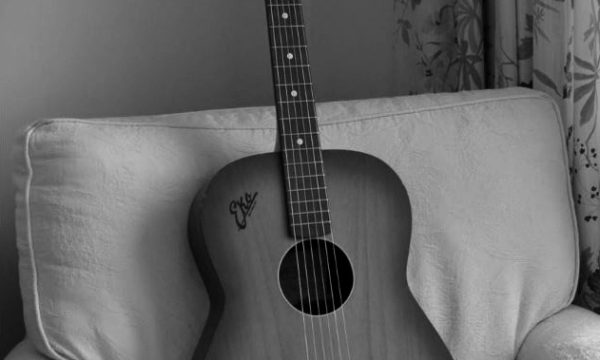
Early Years
Music? Well it’s always been around me.
My grandfather used to play the clarinet in a band when he was in his thirties. His clarinet is still on display in a glass cabinet in my house. My father used to play the accordion, and that was the first instrument I ever put my hands on. I remember many Sunday lunches in my early teens, with Verdi, Beethoven and other great classical composers playing on vinyl records (on our Lo-Fi system) in the background. One day my grandmother must have thought it was time to have me start music lessons. I was twelve when I had my first guitar lesson – and that’s when it all started! With a borrowed Eko classical guitar and a Bona method book! My parents soon played their own part when they bought me a Di Giorgio classical guitar and then my first electric guitar – a Japanese manufactured Fender Stratocaster replica with an FBT solid state 10 watt amplifier. God bless them!
Looking back to those days, after all these years, I see light and darkness, happiness and disappointments, moments of bright hope and dark days of sadness. But all these pieces are simply part of my “musical life” puzzle, and I won’t disown any of them.
1980
The four of us lived in the same block, so it was by no chance that we met and eventually ended up becoming a band. In the late seventies, in the working-class neighbourhood in which we lived, few youngsters played music at all and even fewer had access to “proper” instruments. So there we were. A four-piece band. Bass, drums and two guitars making a hell of a noise in the drummer’s (or rather his parents’) living room, under the menacing look of the Giant Schnauzer that roamed the house!
Puzzle was born!
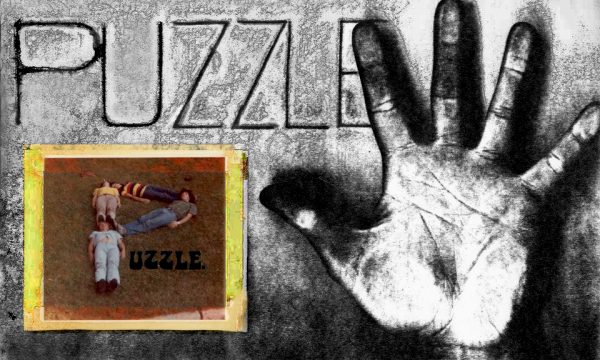
1981/1984
One day we read on one of the few music magazines published in Italian (there was no Internet back then!) that one of our favourite bands used their parents’ country house to compose and play. So, of course, we decided to do the same. A one-week “session” in my family’s country house – definitely far from finished at the time! Our technical set-up was equally poor. We had nothing but a Hi-Fi system. Two stereo cassette decks, an amplifier and two speakers (and a stereo microphone we had bought especially for the session). The recording technique entailed recording some parts on tape A (usually bass and drums) and then, while playing it back through the speakers, overdub live while recording on tape B… and so on and on. (I wonder whether Phil Collins did anything similar for his great hits? Perhaps inspired by our “drums record/playback” original technique!). Invariably, using this overdubbing technique meant that any background noise, such as that from the crackling fireplace (our only source of heat) became part of the final mix. Of course, we claimed that it was all part of the score (somewhat like the Zuccarelli holophonics we would all come to discover years later in “The Final Cut” and “The pros and cons…” album). Anyway, by the end of that week our first “Album” was born. Even if our ego made us think that Rome and its music business in the early 80s were not quite yet ready for our “Music”, and they had nothing much in common with what London had been like in the 70s, there was no doubt in our minds that our tape would have opened the doors of the music industry to us. Result? A complete failure! To be honest, it wasn’t until several years later that we realised we weren’t even close to being as good as our British counterparts. Alas, better late than never!
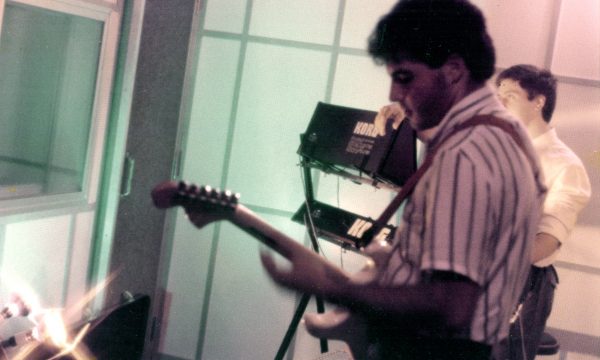
Anyway, we didn’t give up and kept going. A keyboard player joined the band and we became five. The number of gigs (all unpaid of course) increased and our musical skills improved. We soon found ourselves competing for the “the-best-band-in-the-neighbourhood” prize. Our local fan-base grew… as did the money we owed our musical instruments store! Always looking to improve our live show, we went through a short quadraphonic phase too. The problem, however, was that since we usually held our gigs at neighbourhood events, with the stage set-up almost in the middle of the road, using car crash sounds (among others) as “rear efx” wasn’t a very clever idea! Half the audience (mainly housewives) would run off, terrified, before even realising it was a sound effect! So that was the end of our quad moment. Our next step was to rent a small, disused, private recording studio, which we turned into a rehearsal room. This, of course, put us into further debt, but now at least we had somewhere to practice every day. After about a year, and a new drummer, we were good enough to take on the next challenge – our first indoor live gig with real ticket sales at the door.
A hired PA, a big format slide projector and “FRED”, a 2.5 metres tall Plexiglas pyramid (handmade by us) with coloured bulbs inside as our only source of light on stage – Oh how we loved being theatrical! (P.S. I then carried with me on stage my very first original Fender Stratocaster (a second-hand purchase made only a few days before the show) and the extremely heavy Fender SuperTwin amp I’d had since the year before. The nights before the show hundreds of promotional posters plastered the walls of the neighbourhood and beyond (by the way, we realized how tiring plastering poster is!). Guys, the gig was a sell-out!
But more changes were in store just around the corner. A female singer (and then we were six), more gigs and our first professional recording studio experience were to be the highlights of the following year.
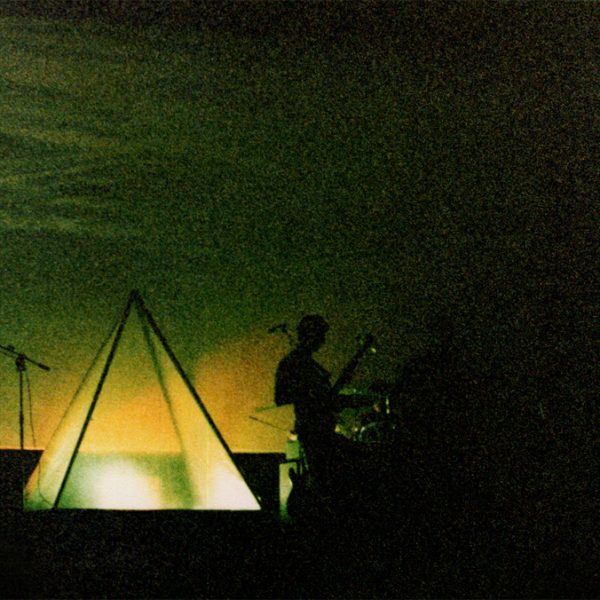
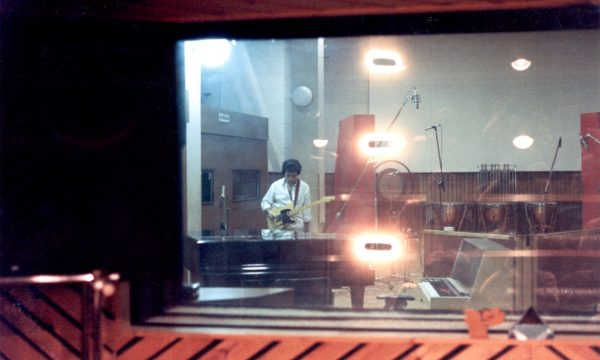
1985/1990
“Stability” is not the ideal word to describe us back in those days and so, after a short time, new changes came along. We had to leave what had been our rehearsal room for the last two years and our singer and drummer both gave up. Finding replacements for them wasn’t easy but, eventually, we were ready to rock again. With a new “hired” singer and drummer, a brand new repertoire of songs, and a new place to rehearse (which we rented as our “New Official Headquarters”), we embarked on our next stint. On my side, a brand new Fender Telecaster Vintage ’52 joined the family and, with it – after a couple years – a Kramer Stagemaster DeLuxe with an iridescent purple finish! (I know… it was somewhat of a heavy metal choice but glam rock was growing in the mid 80s and I have always been a rock fan since my early teens with Deep Purple and Led Zeppelin). The exchange I had made between the “SuperTwin” and the “Roland JC120” (a totally different beast, but very fashionable back in those days) had been weird enough. By the way, I still have (and love) the JC.
The new line-up worked well, we gained some review, some new studio recording sessions (at the best recording studio in Rome this time) and were invited on a TV show broadcast by a national network.
Our new repertoire (more pop/wave rather than rock/progressive – which had been our first incarnation) opened the doors for us to some of the most “glamorous” clubs in Rome and to our live show. And, whilst on the one hand this was welcomed by us as an opportunity to finally sign with a label, on the other hand it took us onto a different musical path; one which, years later, would come back to hit us with a hefty bill. Our repertoire was recorded on tape during one of the many studio sessions but the master-tape was lost and, unfortunately, no copies of it exist today – a real pity. Then, again, another unexpected event shook the band when our keyboard player and – only a few months later – our singer and drummer all gave up. In the meantime, I and another member of the band were asked to write part of the soundtrack for a short TV series. This was the first time we had ever been approached to do something of the kind and we were naturally thrilled to hear our music broadcast nationwide on a prime time TV show.
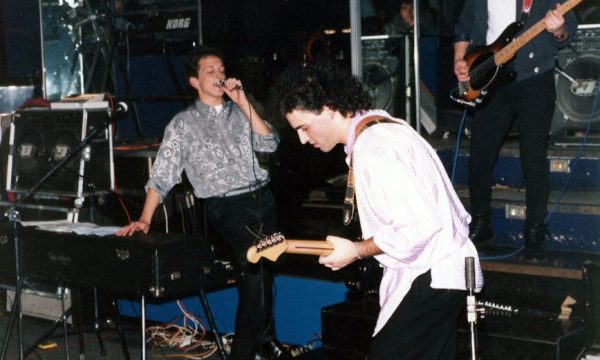
We found a new drummer (for a very short period), followed by yet another one and then, finally, a new singer – a girl. And so, after 10 years and countless line-ups, we were eventually a pop-band, with a few new songs under our belt (which perfectly matched our new spirit) ready to be recorded. One of these songs (chosen by the usual producer who paid for all our “holidays” in a recording studio) was especially made with the help of a well-known arranger/producer (someone who was very much “en vogue” in those days) to try to break through the fences of a label. But, you know what? Nothing happened, and our energy and determination started to run low. Luckily, we got “recharged” a little when we were asked to write a new soundtrack – this time for a proper feature film with a couple of well-known international names in the cast. The big screen and Hollywood were finally calling! We did our best, as usual, and the music was composed and recorded. I can still clearly remember the day we were invited to the film’s private screening together with a few members of the production team. I was seated just behind the production studio’s BIG BOSS. At the end of the screening his only words (prompted by the somewhat unfortunate angle of one of the shots) concerned the main actor’s “incipient alopecia”. I couldn’t believe it! Was that the only important thing? Didn’t he have anything else to say? What about the movie as a whole? What about the screenplay, the photography, the editing? Had he liked them? And, above all, what had he thought of the soundtrack? Absolutely nothing! I mean, no one gave a damn about it. He probably hadn’t even noticed it. I suppose the good thing, at least, was that it hadn’t been criticised – as had the poor actor for losing his hair! The movie didn’t turn out to be the blockbuster we had hoped for and, needless to say, our air tickets to L.A. went unused.
"Having a private studio was like a dream come true and it is there where many of my musical projects were born..."
1990/1994
In December 1990, after two long years of hard work and invaluable help from my father, “Soundtrack Studio” began its almost 25 years of history. This was a cornerstone to what my career as a sound engineer (and not only) has since been. Having a private studio was like a dream come true and it is there where many of my musical projects were born. Unfortunately, one of the first events the studio witnessed (although, admittedly, this had been in the air for quite some time) was the end of the Puzzle experience. Too many different line-ups and changes in style, and the fact that we had failed to achieve a recording contract, had undermined the band’s stability. And so, even because of this, I put away my role as a musician for a while (at least as per my original plans) and let the other me in. You see, during the band experience I had loved sharing technical tasks with our technician – who was also a very close friend. Now though, I had the possibility of training this part of my musical being on a daily basis. Moreover, at that very time new instruments and technologies and, consequently, new challenges, were popping up every month. And so, much to the joy of my instruments stores, I filled my studio with everything I could afford. This, together with my ever-improving technical skills, brought clients to my studio and kept me very busy on third-party projects. Alas, I was still far from being a working guitarist.
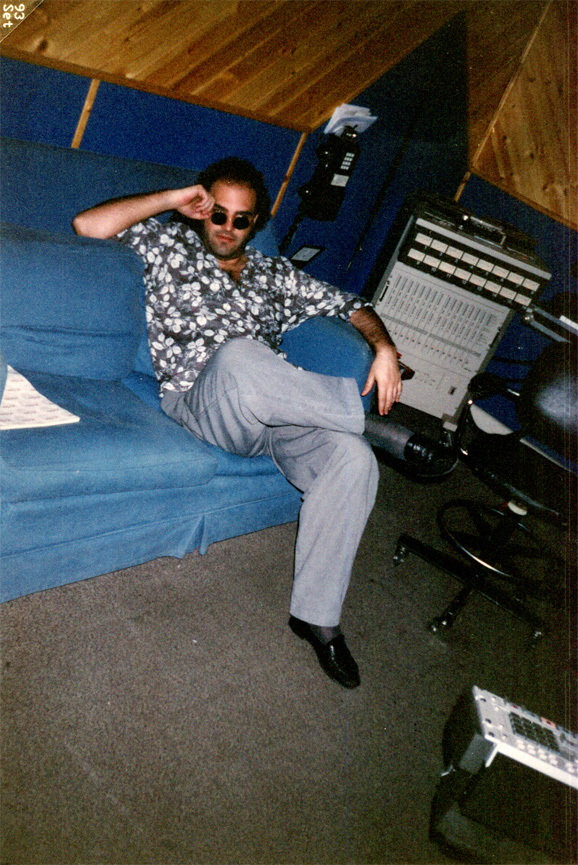
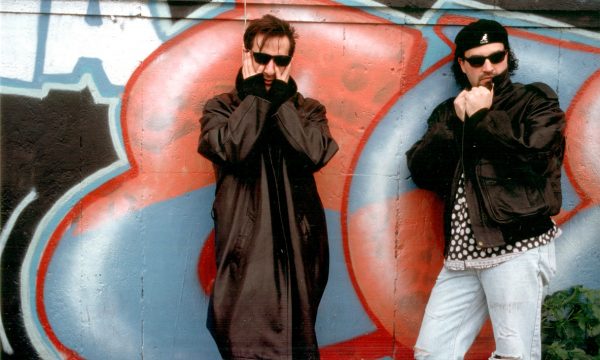
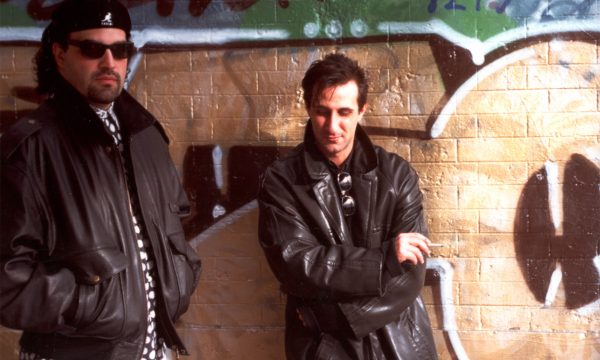
1995
1994 saw the beginning of a new project. A friend of mine (aka Juggy) wanted me as his partner for what would become, in 1995, a very much talked about musical project in Italy (not because of any huge sales, but rather because of the attention it was given by the national – and in some cases international – media). Indeed, the tabloids, radio and TV networks gave that one-of-a-kind CD a truly unexpected coverage. What made “Par Condicio” a somewhat unique project was the fact that, along with me and a bunch of musicians playing the musical parts, all the lead vocals were “stolen” from politicians, news presenters, actors and other famous people. What we did was to record literally hundreds of hours of audio content from radio and TV, analyse it all, cut it into single phrases and then sample and reassemble it all so as to create a real melody and lyrics to the album’s eleven songs. Moreover, four well-known Italian actors, sang a few additional parts in my studio. All these phrases were assembled to “paint a picture” of Italian society and politics in those stormy years. When a press agency called to tell us that “The Washington Post” wanted to write an article (by Daniel Williams) on us with a photo shooting session (by Gerald Bruneau), we realised we must have done a good job.
A showcase was arranged (with a press conference chaired by one of the most famous and respected Italian journalists) as were several live shows; and once again, “challenge” became my keyword. In fact, back in those days, having a live show of more than an hour with musicians playing live and “in sync” and the lead vocals (thousands of words) pouring out from a rack of samplers controlled by a DAW, was something very unusual. Almost a nightmare environment back in 1995. But guess what…I won!
1996/2000
Once the repercussions of “Par Condicio” had faded, I went back to my sound engineering work; less thrilling, of course, but more stable than the “artistic” side of life. Pro Tools made its definitive entrance into my studio setup and hasn’t left it since. For a period of time it worked together with my old and trusted analogue recorder – until, of course, this was called-up for retirement. I must admit that I sometimes miss the warm, fat, smooth sound given off by tapes, but the clients’ growing love for new technology (which makes just about anyone sound like a skilled pro – if you know what I mean!) and the excessive costs they had to face to have an open reel tape, inevitably marked the end of an era.
In 1997 I did some re-mixing work based on a couple of songs of one of my favourite Icelandic artist of the time. This work led to several brief contacts with the artist’s label but, unfortunately, to nothing more. Here goes the story (strange to believe but true!): I sent the label a demo tape with a message saying that I would be in London a couple of days and available to meet with them (for some unfortunate coincidence my trip – which had been booked some time in advance – took place over the days of Lady Diana’s funeral). Once in London we exchanged a number of messages (me leaving messages on their office voicemail and them with my hotel reception), each asking to call back to arrange a meeting. The funny thing is that after three days chasing each other, and a somewhat tragicomic trip of mine to the Label’s (wrong) address (why London has so many streets with the same name but different post codes is beyond me!), we gave up on each other. It probably just wasn’t meant to be. Or, perhaps, I’d been (as usual) a little too optimistic.
In late 1998 I started working on a new album with a friend/colleague of mine. Just like “Par Condicio”, four years before, the idea was to make something that didn’t fall under any specific category or tag. Or, at the very least, to have a crossover between different styles and genres; a blending of jazz, pop, ethno, jungle and a bit of electronic so as to produce an unusual sound. The self titled album was released under the name “Off Ensemble”. Once again we got some good reviews, but not the long awaited great change to our lives.
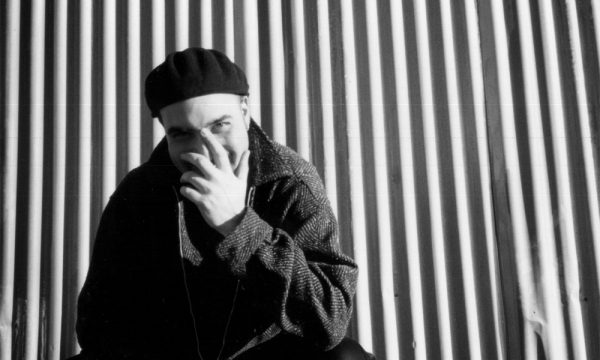
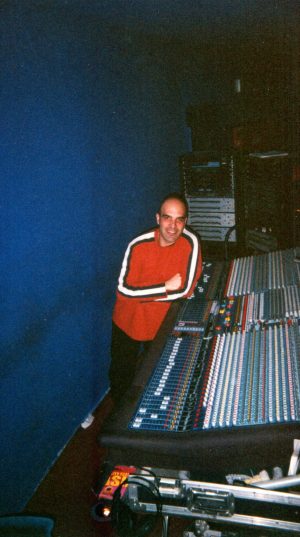
2000/2005
The summer of 1999 marked the beginning of my career as a freelance sound engineer. I would spend most of the following six years on the road working on live gigs, theatre plays and musicals. More than 500 shows held all around the country, with requirements ranging from simple 3-piece bands right up to some really complex musical staging with 15-element rock orchestras and twenty or more singers, actors and dancers performing live.
Along with this work, I also started doing sound design/engineering work for several TV shows broadcast by different national private networks as well as by RAI (the state broadcaster) as well as for some live music festivals. Working with (and for) such a vast range of highly talented artists, both Italian and International, was something truly great. All this work really opened my mind to what lies behind the scenes of different forms of entertainment, and to the pros and cons of being in front or behind the camera.
2006/2007
After all that travelling around, I took off my “on the road” costume and went back to wearing my comfortable “in house” one. The studio was in dire need of a revamp and I needed to offer my clients something new. And so, ladies and gentlemen, please welcome a brand new Yamaha grand piano New outboards, microphones and a rearranged control room were the finishing touches. Other than for a commercial purpose, the new “big guy” was brought in to provide new inspiration for a musical project I had started working on several years before, and which I will talk about more on this page.
Ever since the sound engineer in me had taken over, no new guitars had joined my roster of instruments. What a shame! So I decided to make my old musical instrument stores happy again, and over a short period of time bought a new Stratocaster, a new Telecaster (which replaced the Telly ’52 re-issue I had had to sell a few years before to meet some of the costs of the new studio), a cheap (but great sounding) Cort, a 12-string Danelectro ’59 model, a Takamine acoustic and, last but not least, an all-original early ’70s, Fender USA Champion Studio Deluxe lap steel! Interestingly, this last purchase meant a nightmare flight for a dear friend of mine, a very talented professional photographer, whose only fault had been to be flying back to Rome from New York City a few days after I’d bought the guitar from a New York online store. You see, in order for him to carry my precious guitar as cabin luggage he had had to put his expensive cameras in the plane’s hold, and, of course, had been a nervous wreck throughout the flight! Thanks again my dear friend!
February 2007 marked another important moment in my life as a musician. When the UPS guy rang at my door, my family of instruments welcomed Mr Stick himself. Our “long distance love” had begun far back in time, and now, after a long wait, here he was. You see, although I’m a guitar player, I really love low end… and this baby is my first choice when it comes to the bass part. This might come across to you as too hyped – after all, you may say, it’s just an instrument. True, of course, but this instrument, because of its inner nature and wide range of tonal intervals (which go far beyond those of a “standard” guitar or bass), really does open your mind up to different harmonic and melodic approaches.
"What had until then been a distant and tiny voice inside my head now became the 'lead vocals'. The time had come to move out of my comfort zone to find what I was really looking for."
2008
All considered, things hadn’t been too bad until then. I’d released a few CDs, a couple of soundtracks and several other music projects, and my studio had become a sort of point of reference for many local musicians, many of whom had remarkable curriculums. My sound engineer career had taken me all over the country, far beyond what I could ever have imagined. There was just one big “but”. What had until then been a distant and tiny voice inside my head now became the ‘lead vocals’. The time had come to move out of my comfort zone to find what I was really looking for. And to me, out of my comfort zone, meant one thing only – London! My plan was to move there for a while and to build a network of contacts that would come in handy as soon as I was ready to take the leap. One day, in the summer of 2007, whilst on one of my many London weekends along the “Old father Thames”, I bumped into a good friend of mine, a London based songwriter (remember the first Puzzle’s female singer?). She told me about her plan to work on her own new album and within seconds a clear and vivid picture materialised itself in my head – Let’s do it!
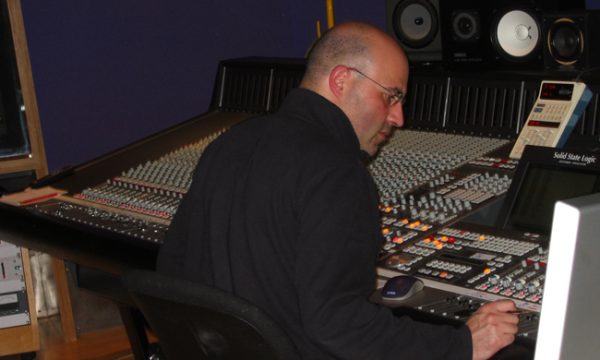
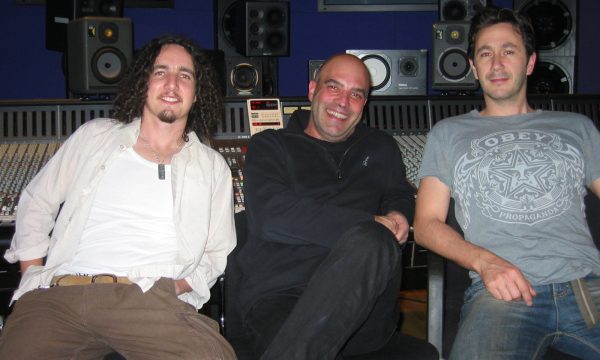
So there I was. Living in the city I most love and working as a producer. Being a producer for a record is something truly thrilling. The artist will usually have a few rough songs and will expect you to draw the best out from them. This means going through a somewhat lengthy process to shape the material and to choose the right people – the right musicians, the right mastering engineer, the right studio, the right recording/mixing engineer, etc. and to then guide them all so as to transform a rough idea into an impeccable piece of work that is coherent with the artist’s original vision. Not an easy task. I had done this in the past, but doing it there, in the heart of the UK’s musical environment, working in some of the country’s top studios, was something quite different. Could anyone ask for more? Well, London may no longer be the magical place it had been between the late 60s and early 80s, but it certainly still is a source of creative inspiration. This might sound weird, but living there for a while, breathing in the city’s air and working alongside skilled and consummate professionals who were used to working on top of the chart albums, really unlocked some doors in my mind. There are many things about British music that I have always loved, but which have really only started to make sense since that experience.
"After two more decades mainly spent as a sound engineer, it was time to happily go back to my roots. My goal was to be a musician and to work on my own projects."
2009/2012
Time flies – sad but true – but then, when you’re busy doing the things you love, you’ll always have a lot of amazing memories to cherish. I spent my teens and youth with a bunch of real friends, sharing the dream of becoming a musician. After two more decades mainly spent as a sound engineer (and somewhat involved in third party releases), it was time to happily go back to my roots. My goal was to be a musician and to work on my own projects. And so, a few more suitcases to pack and then unpack, and I was back home, ready to start from scratch – but this time with almost 40 years experience! It then took me a couple more years to focus on, assemble and release my first solo album.
Marco is here.
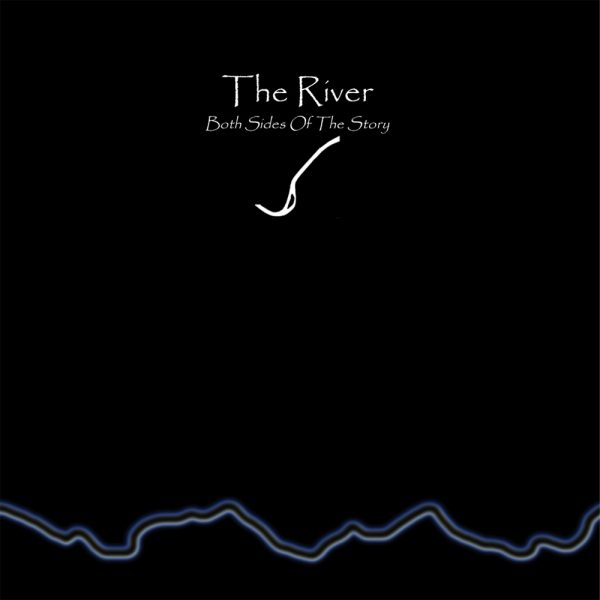
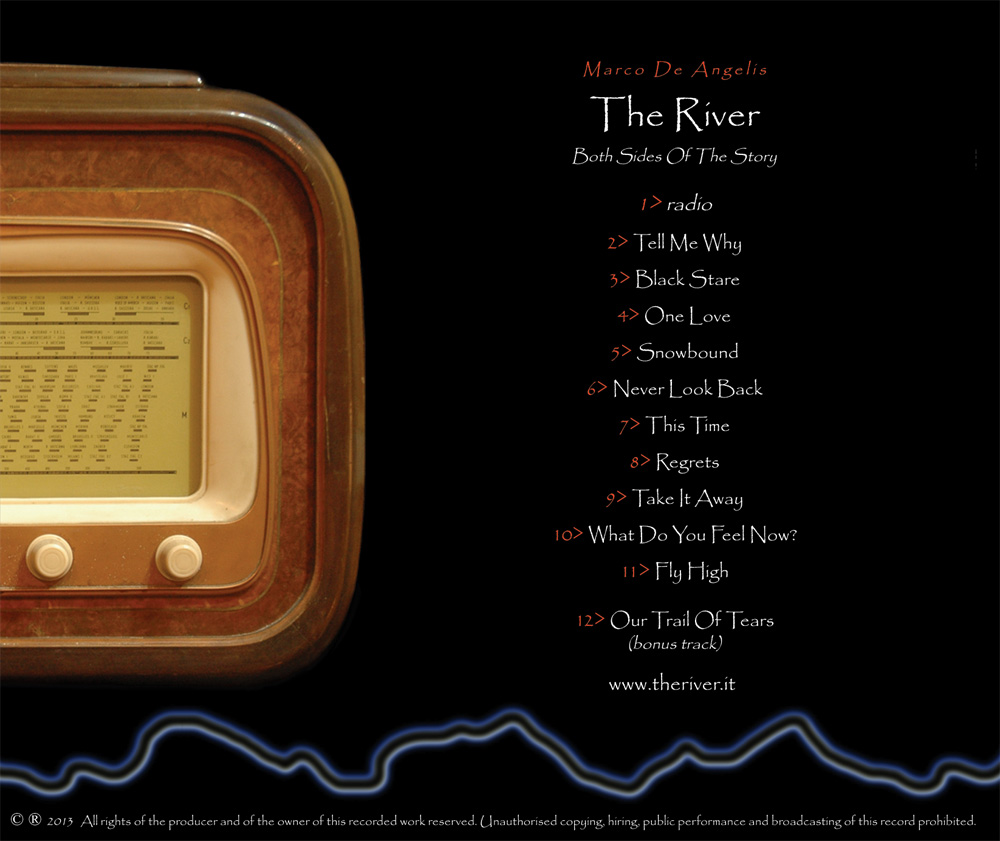
2013
Originally intended as a sort of musical piece, “The River” changed its skin during work in progress, until it eventually took its (current) final shape. As a matter of fact, even though September 2013 was the actual release date, this only marked the final step of a long journey that had started many years before. Some of the tracks had actually been written (or at the very least been sketched out) way before their release. “Black Stare” goes back to about 1992/93, “Snowbound” was conceived around 1999, and “Fly High” and several other songs first popped up in my mind sometime between 2005 and 2007. “Our Trail Of Tears” was something quite different. This was originally called, “Trail Of Tears” and is a song that goes back to the “Puzzle” era (about 1985). As the credit notes state in the booklet, I added it as bonus track on “The River” playlist to pay tribute to the whole Puzzle experience and to all the band’s past members.
In terms of compositional style, my original idea was to be part of what I refer to as the Pop-Prog world; blending the two styles together in a well-balanced and enjoyable product. People seem to like it, as all reviews have been more than positive.
I played all the instrumental parts, including the piano ( the Big Guy) and keyboards. My stick made its debut in an official release and, alongside it, most of my guitars had their moment of glory too, as did the bouzouki, the mandolin and the dobro and (of course) my Fender lap steel guitar. Drums were the responsibility of Cristiano Micalizzi, , whilst the lead vocal parts were sang by Marcello Catalano (an old friend of mine since early 2000 when we worked on some musicals together). A very good job was also done by an ensemble called “Vocintransito”, who catered to all the backing vocal parts.
Most of the songs are connected by ambience sounds… ahem…Mr Zuccarelli is always there and will be in the “Next Station” too!
2014
The River Live Rehearsal.
The making of a live show
Between 26-27 February 2014 a two-day shooting session involving some 20 people was organised to make the 40-minute documentary, “The River Live Rehearsal – The making of a live show”. This documentary (which was only made for promotional purposes) consisted of four songs, played and recorded live, plus interviews with all the musicians who were to bring The River Live on stage.
2017
In 2015 I started sowing the seeds of what was to become my second solo album. The writing work was faster this time, with no songs from the past – as had been the case with “The River”. All the material came up over a relatively short period of time, somewhere around 2015/2016. Several events from my private life – and consequently my mood during the writing process – drove me towards a more complex and progressive style. An overall sense of disillusionment and cynicism surfaces in a number of the songs, especially in the longer ones of the album. The lyrics – the style of which has evolved – are sharp and penetrating and somehow even more personal than in “The River”. It took me quite a long time to write and edit the lyrics for this album. You see, in order to be free from any rhythmic conditioning, I wanted to have the lyrics done before the melody lines. You may notice the occasional literary quotation and lyrics from different Prog-Rock albums. I definitely like the result, even though the background atmosphere is pretty dark. But then again, our lives flow towards “unforeseen paths” and even in the worst of times we sometimes bump into pleasant surprises just around the corner. Indeed, the credits include a number of remarkable guests whom I am very proud of. How could I not be? If you ask a number of international well-known singers whether they would like to be part of your new album and they all answer with a loud and clear YES, you can only be happy about it. So thanks again Nad, Robbie and Göran. You did a great job! Unlike what I did for The River, all the recording, mixing and mastering sessions for Next Station took place at other studios instead of mine so as to focus on my “artistic” role rather than the technical one. The choise was quite simple, infact I wanted Fabrizio Simoncioni (a professionals I knew for his great skills) for the mixing and one of the most awarded mastering engineer and Grammy winner in the person of Tim Young at Metropolis Studios, a place I knew very well. Just like “The River”, “Next Station” (released in December 2017) has received lots of positive reviews and feedback and has been aired alongside many top artists.
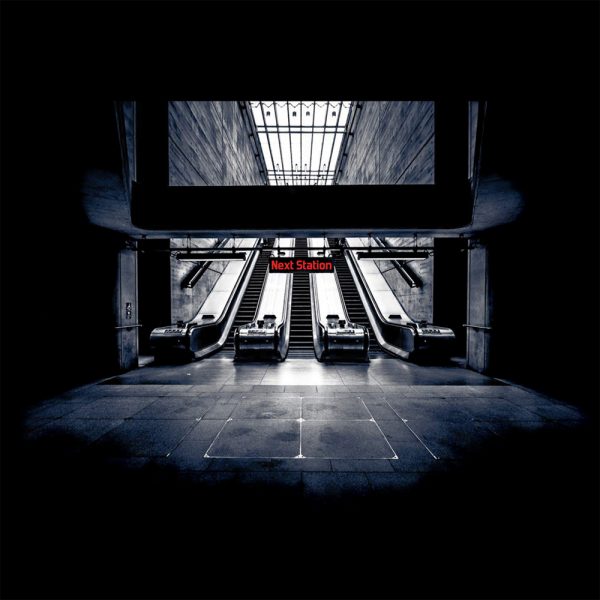
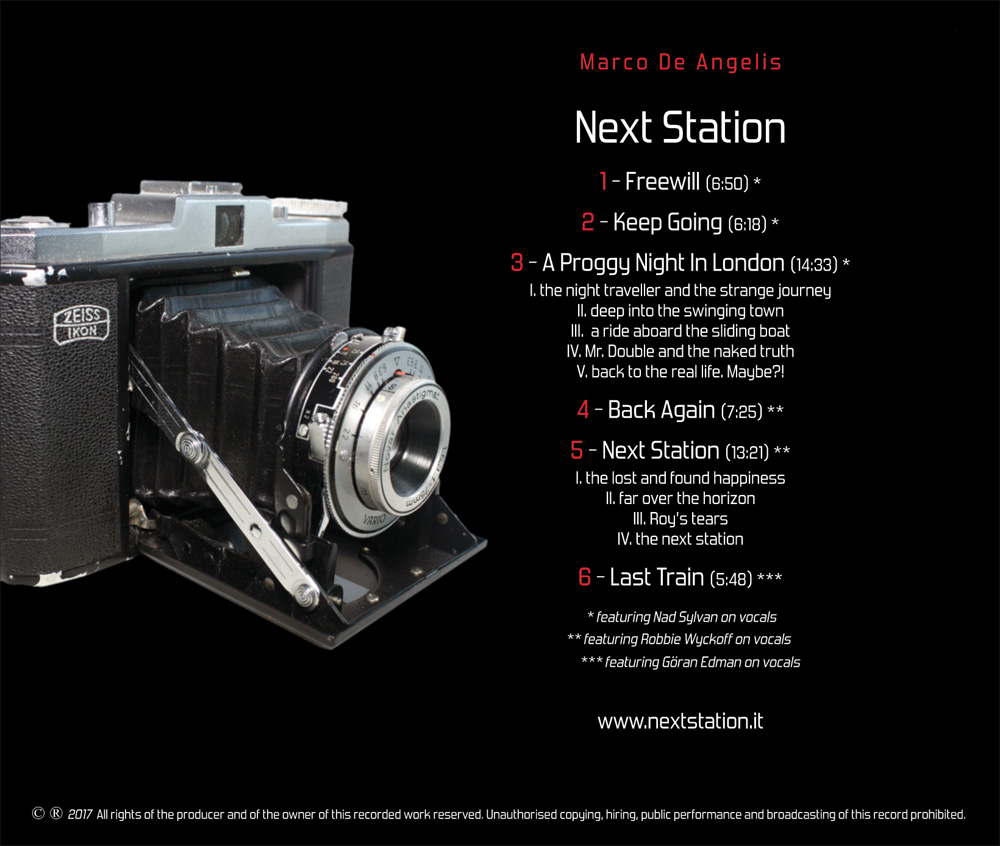
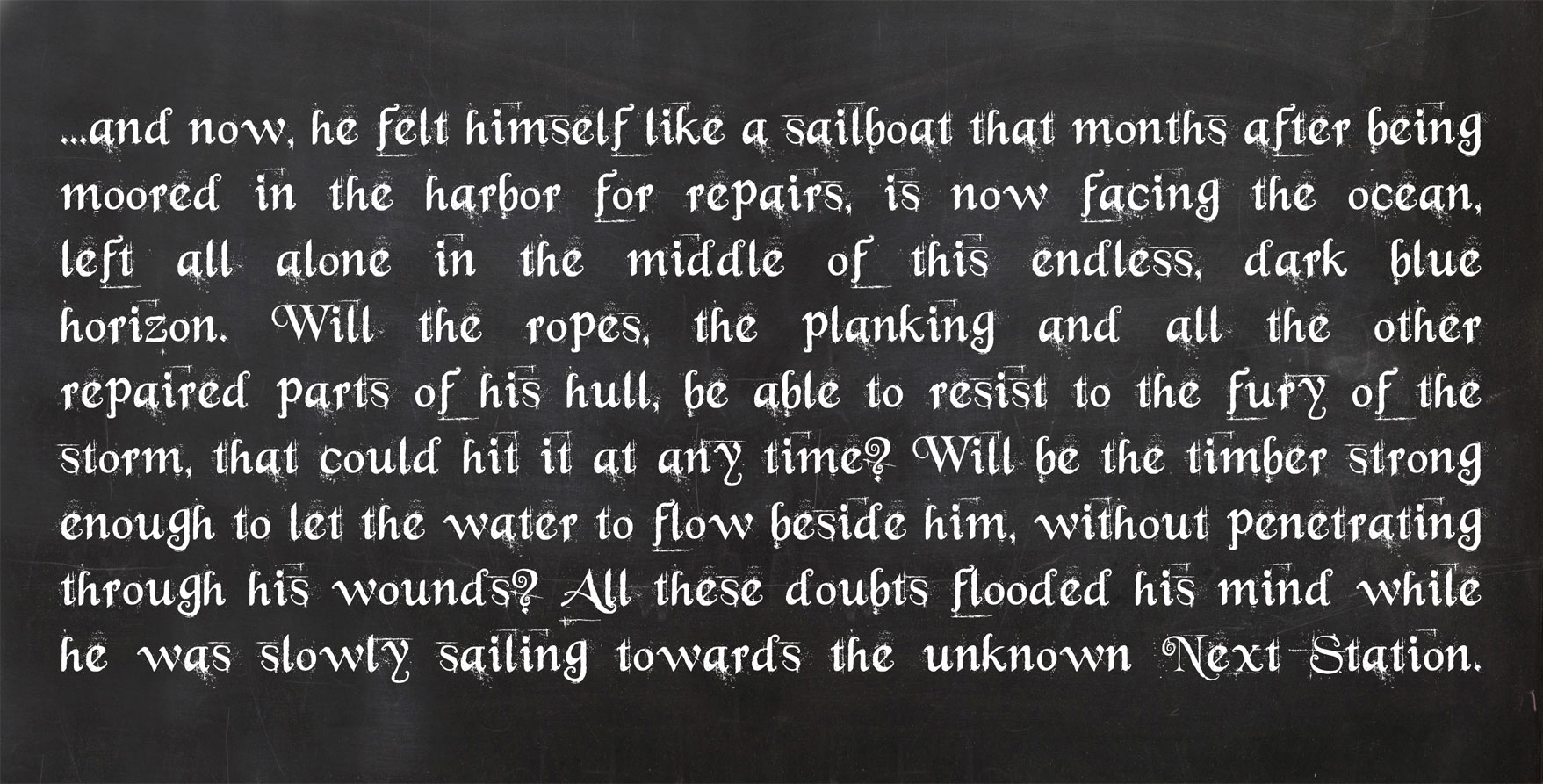
Today
I still have a long way to go, but it’s a blessed way and I’m happy.

